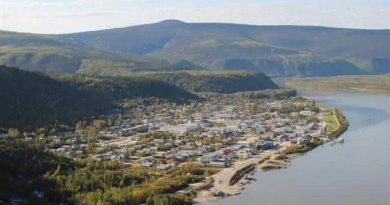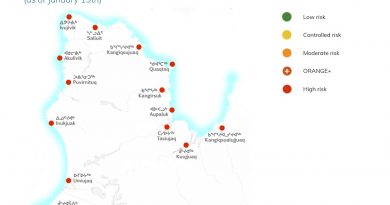Oral histories unlock impact of climate change on nomadic life in Arctic Russia, says study
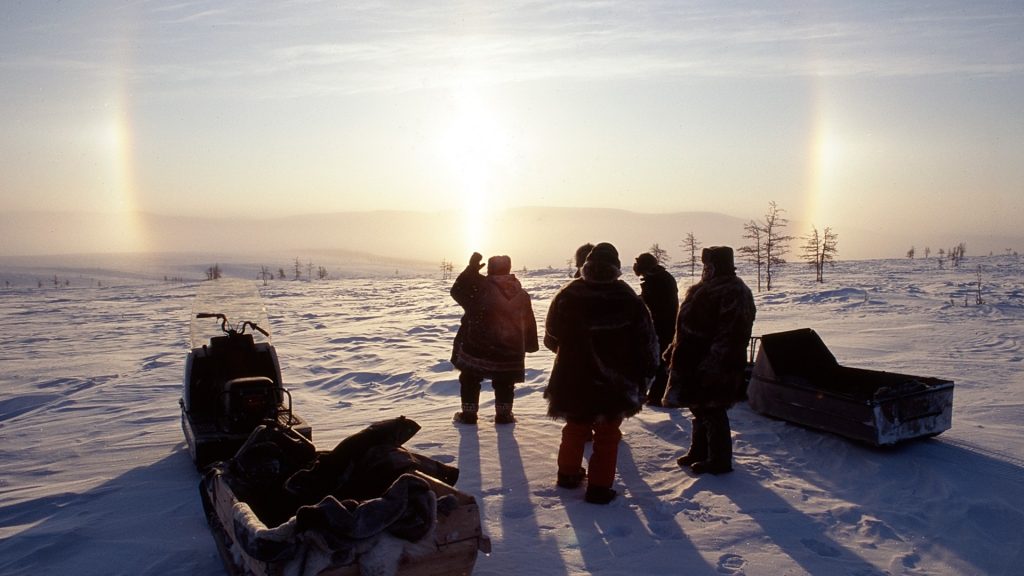
The oral histories of nomadic Indigenous Peoples in Siberia are helping to unlock the full impact of climate change on Arctic Russia, says a paper published this spring in the journal Arctic.
“The headlines coming out of the Russian Arctic are often tackling militarization or environmental pollution or how Putin is doing this or that,” Tero Mustonen, a Finnish geographer and one of the paper’s authors, told Eye on the Arctic. “But we don’t often hear how environmental change is affecting Indigenous Siberian peoples and nomadic life in the Arctic and that is just as important.”
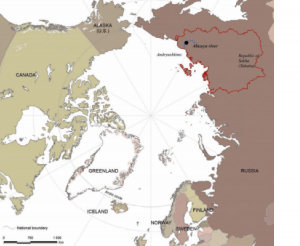
The study, “The River Alazeya: Shifting Socio-Ecological Systems Connected to a Northeastern Siberian River”, looked at the social and economic impacts of climate change on the Yukaghir and Even peoples in the village of Andryushkino in Russia’s Republic of Sakha-Yakutia.
The village, located on the Alazeya River in northeastern Siberia, is one of the most remote on the planet. Today, the village can only be reached by helicopter, or by a 20-hour drive by ATV along tundra road from Kolymskaya, the nearest settlement. The Alazeya River is a body of water that measures 1590 km long and has a catchment area of 64,700 km2.
To do the study, Mustonen, Russian Indigenous geographer- historian Vyacheslav Shadrin, and their community co-researchers in Andryushkino, gathered oral histories in the region between 2005 and 2020 and compared them to Russian weather data and other published scientific literature going back to the early 20th century.
Survival of nomadic lifestyle
Andryushkino was established during the Soviet period in the 1940s. In the beginning, it was mainly an Even village, but came to be populated by Yukaghirs, Yakuts, Russian’s and others.
The Soviet government established the village to force Indigenous nomads into a settled lifestyle. Many Indigenous families did settle, but for others, the village has evolved into a kind of service hub where they go to to buy provisions or goods, but who otherwise still practice a nomadic lifestyle with their reindeers, with a range of sometimes up to 400km.
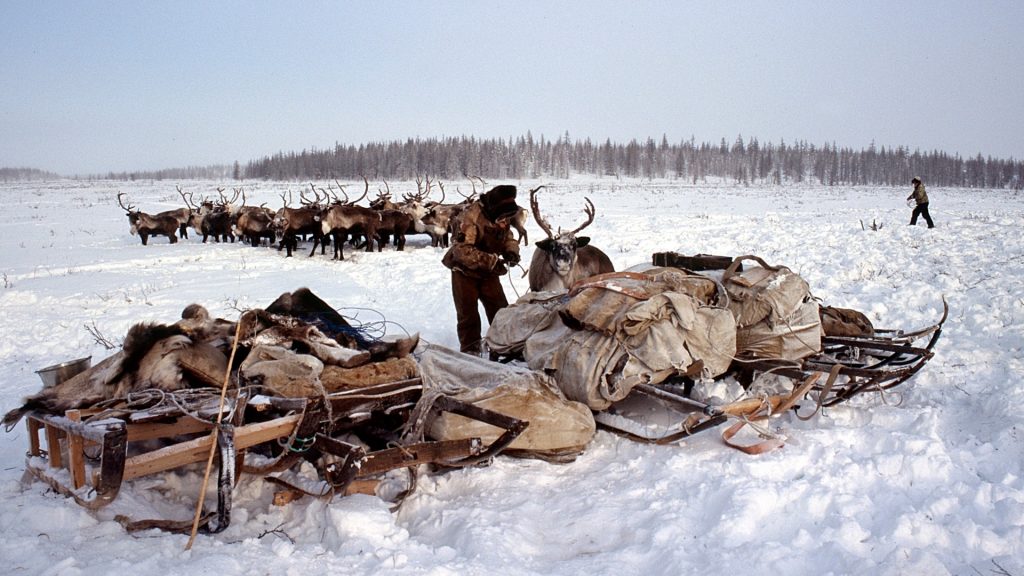
One of the main themes that reoccurred in the oral histories was environmental change, with flood events among the items given most importance, especially three separate flooding events in the 1936, the 1957 and 2007.
“These nomadic communities’ main livelihoods are hunting, fishing and reindeer herding and all rely on being able to correctly anticipate and predict the aquatic ecosystems of the Alazeya River,” Mustonen said.
“Looking at how the local people conceptualize the 2007 flood event and reflected on their own knowledge back to the 1930s and 1950s flood events, and that those events even had Indigenous names, we were trying to offer at least some step forward in how unique these knowledge systems are that are still maintained by nomadic peoples and their continued unbroken engagement with the land over thousands of years.”
‘First Siberian climate refugees’
The flooding of the Alazeya River in 2007 was precipitated by a year of warmer than usual conditions mixed with increased precipitation.
“The air temperatures indicate twice the speed and amount of warming in NE Siberia compared to the global averages and the 1982 –2015 mean,” the study said.
The flooding was triggered by a complex process including lakes that overflowed after meltwater entered them and caused huge amounts of water to travel downstream, followed by thermal erosion — the process of ice or permafrost thawing followed by erosion from water flow — of the riverbanks.
The region was completely flooded, people lost their homes and the community was evacuated.
“The 2007 event was unparalleled in the amount of water that came forward in the system,” Mustonen said. “Combining these ways of knowing, oral histories, observations made by women and men, the hunters, the fisherman, the nomadic people and the satellite information, we were able to deduct that this flood event was unparalleled.”
Oral histories correspond with scientific data
Environmental changes registered by local knowledge holders that precipitated the 2007 flood, also mirrored oral histories passed down from the 1936 flood.
“There’s one thing that stood out in the 1936 weather records, and that is you will also find an extremely hot summer, also reflected in the oral histories, and a year of massive forest and tundra fires,” Mustonen said. “One of the local deductions was that the flood happened because there was so much burning land and that might have caused damage to the local permafrost regimes, as with what happened in 2007, because of the permafrost thaw.”
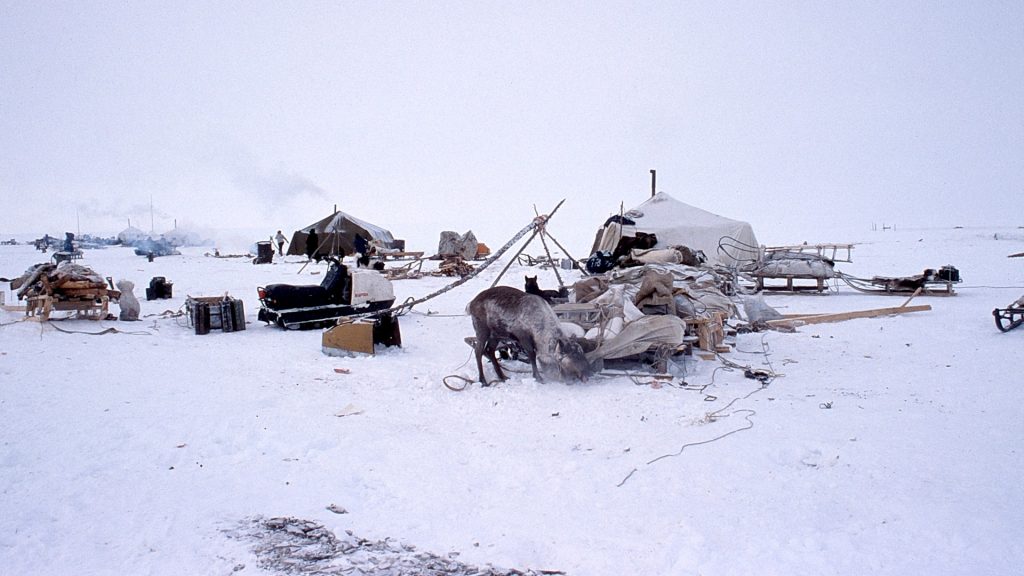
There is less direct understanding about the 1957 flood, named Ulakhan uu, or “big water” in the Sakha langauge, something Mustonen says needs more investigation.
“There’s no Indigenous knowledge about warmth before that flooding event, but that may have been because it was not exactly in the village,” he said. “And we don’t have any records of permafrost events that may have contributed to the 1957 flood. That’s doesn’t mean they aren’t there, it just means we would need more sampling to know either way.”
Mustonen says the effects of climate change on Arctic Indigenous Peoples in Russia is still little known compared to places like Canada and Alaska and more collaborative work needs to be done with local communities.
“We should be pressing for more dialogue between Indigenous oral histories and science,” he said.
“Research has to be in service of the people. and in this part of the Arctic, the Indigenous people have seen many decades of scientific expeditions but with target inquiries that have not always taken into account their interests or their knowledge. But there is huge value in exchanging with communities in the most remote regions of the Arctic to appreciate the deep engagement the Indigenous people have with their landscape at this unprecedented moment in time and create an environment for Indigenous communities at the fault line of climate change that is safe, and at the same time, allows them to safeguard their lifestyle.”
Write to Eilís Quinn at eilis.quinn(at)cbc.ca
Related stories from around the North:
Canada: New research chair at Laval University to help better understand permafrost changes in Arctic Quebec, Eye on the Arctic
Greenland: Oldest Arctic sea ice vanishes twice as fast as rest of region, study shows, Eye on the Arctic
Norway: Thawing permafrost melts ground under homes and around Global Seed Vault in Svalbard, The Independent Barents Observer
Russia: Remains of ice age woolly rhinoceros found in melting Siberian permafrost, The Associated Press
United States: Bering Sea ice at lowest extent in at least 5,500 years, study says, Alaska Public Media

